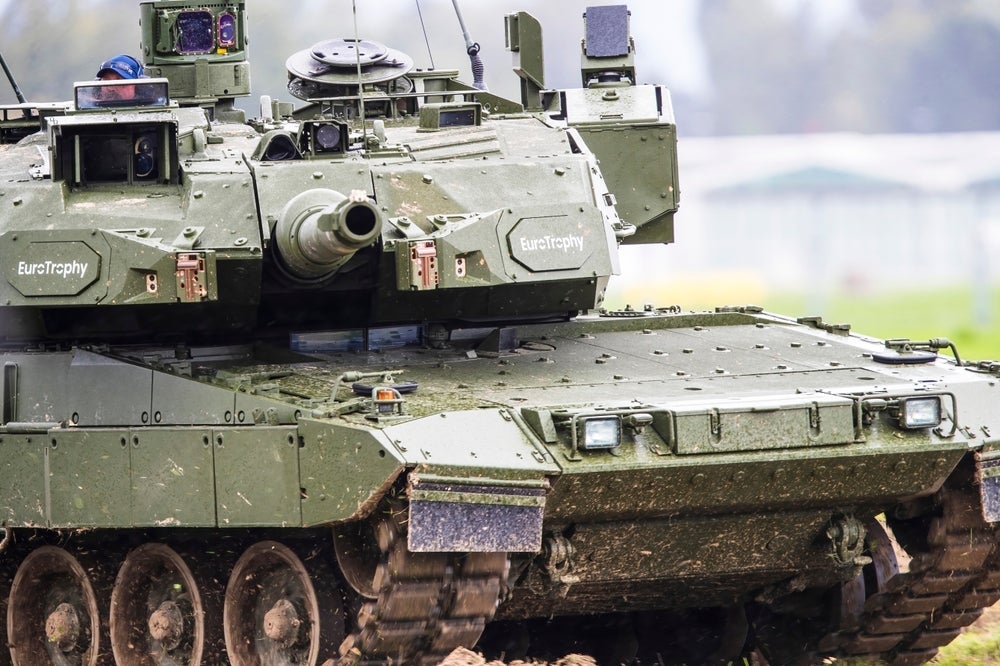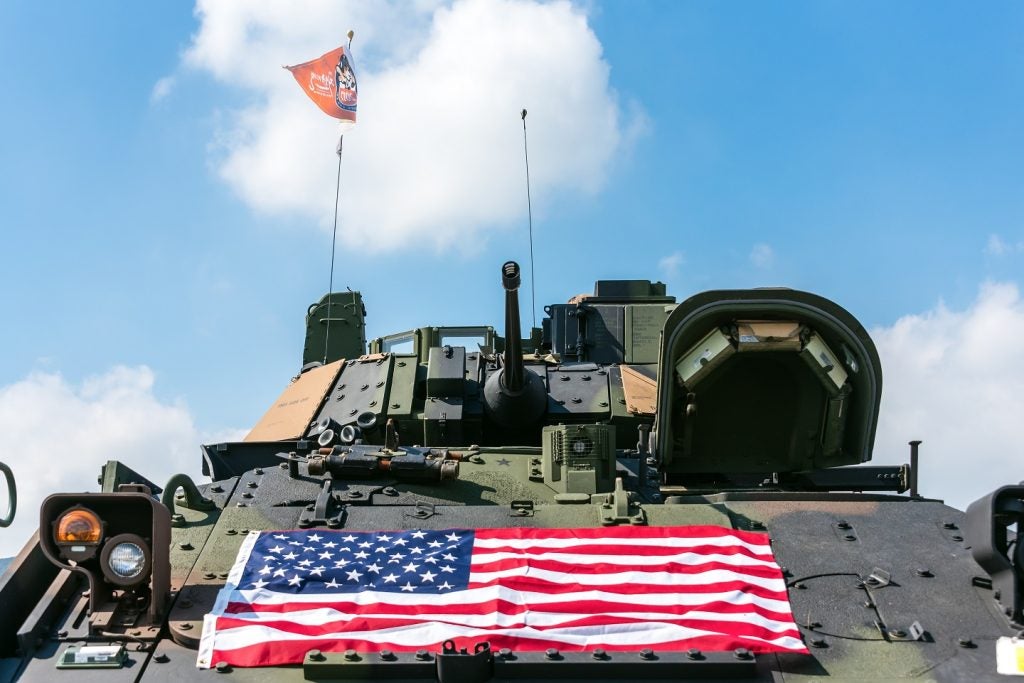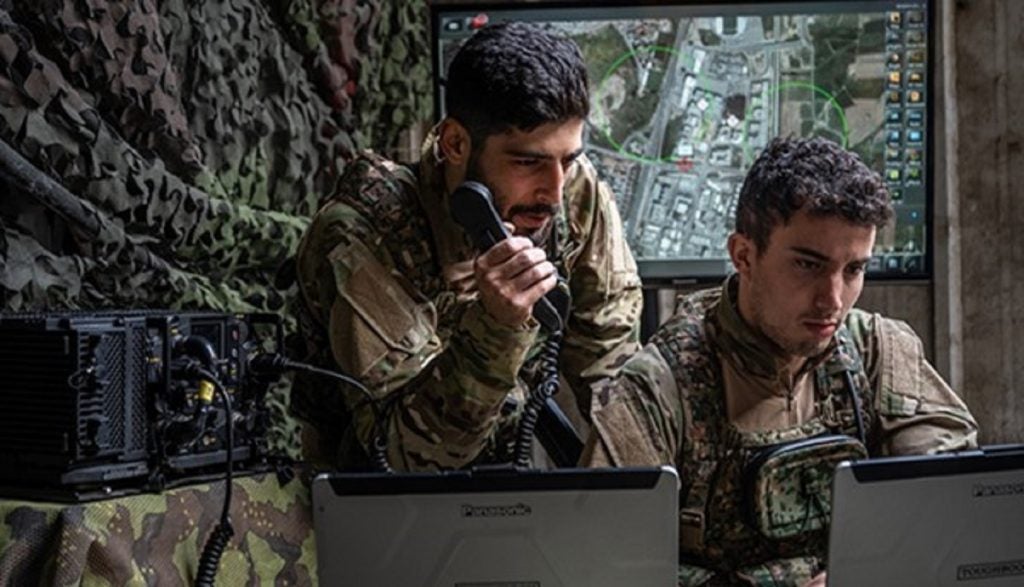

Today’s warfighter has more data at his disposal than ever before. Data is being gathered continuously by almost every digital platform in the battlefield, allowing commanders to make decisions based on real-time information in the quickly evolving battlespace.
In place of yesterday’s analogue voice and messaging are today’s digital video, voice and data capabilities. Line-of-sight communications are now augmented with satellite and broadband communications capabilities that keep soldiers connected to HQ even in the last tactical mile. Every asset is continuously feeding into the network, pumping in images, video, health and usage data, location and mapping information, intelligence, surveillance, reconnaissance and target acquisition information, creating a situational awareness picture more complete than ever before.
The challenge
The difficulty with this increasingly digitised battlefield is the need to render the enormous amounts of data in the network manageable and accessible. Command and control (C2) solutions must be able to process raw data into intelligence that informs, rather than overwhelms, the user. Users are seeking C2 solutions that organise data in innovative ways and take the analytics burden off the operator to ensure that data does not lose meaning or context when disseminated throughout the battlespace.
"In the current operating environment data that comes into a tactical operating command operations centre is all provided by disparate systems," said Gary Raven of Textron Systems Advanced Information Solutions. "So for a clear picture of the battlespace commanders and operators have to look at the information in all these silo systems – all displayed on different displays – and actually try to bring all that information together in one place in their head. This need to cognitively combine that data to get a clear picture of what is going on in the operation slows down the decision making cycle."
See Also:
Potential solutions
Textron Systems Advanced Information Solutions’ iCommand cloud-based information management capability is one of a number of new systems emerging from the industry that are designed to tackle these key issues.
How well do you really know your competitors?
Access the most comprehensive Company Profiles on the market, powered by GlobalData. Save hours of research. Gain competitive edge.

Thank you!
Your download email will arrive shortly
Not ready to buy yet? Download a free sample
We are confident about the unique quality of our Company Profiles. However, we want you to make the most beneficial decision for your business, so we offer a free sample that you can download by submitting the below form
By GlobalDataiCommand provides a full picture of the battlespace in a map-centric view – both in real time and replay for post-mission analysis, connecting users with an organisation’s platforms, sensors and data feeds to create a fully interactive and collaborative environment for managing intelligence. All information is brought together in a single display and is interactive, editable and collaborative within an individual operating centre or across multiple sites, giving users a single view of the battlespace.
How real is this threat and what are countries doing to counter it?
"We originally developed iCommand 1.0 to provide a next generation set of tools and services for performing interactive C2 across a variety of platforms and systems, with an emphasis on developing middleware services that are cloud-hostable and highly interactive for touch-face interactions with assets," Raven said. "We wanted to support the same type of user interactions you get with common commercial devices – such as mobile phones – so users can easily drill down through real time operations in the battlespace, and utilise rewind capabilities, and they can see all their data, assets, and units in a four dimensional space.
"One of the key aspects of the system is not just the presentation of the data in 4D, but the ability to then use simple gestures to perform C2 – you can tap any asset available to issue new tasks for those assets to perform, such as changing the position of a loitering UAV or repositioning a sensing asset, or issuing commands to units across the battlespace."
At the outset iCommand was developed with an emphasis on unmanned aerial vehicles (UAVs), with Textron Systems working very closely with the special operation forces (SOF) community to meet their specific requirements to manage operations and fully exploit the capabilities unmanned assets bring to operations. As the relationship developed and Textron Systems worked to tailor the system for SOF mission needs, it grew beyond the unmanned systems scope to support the multi-intelligence ingestion of data to provide a full picture of the battlespace.
Textron Systems released an updated version, iCommand 2.0, at the Special Operations Forces Industry Conference (SOFIC) in May 2015. This thin-client version enhances the interactive and collaborative capabilities of the original, providing ubiquitous access to real-time C4ISR information from any web browser, with no software installations or custom plug-ins required. One single node supports concurrent use by up to 50 users, ingesting up to 50 full motion video feeds and 30,000 sustained individual tracks including 48-hour retention and recall of all tracks and video data. Nodes can be distributed across the battlespace as required.
In the cloud
In addition to streaming synchronised information from multiple data sources and locations to one multi-touch geospatial display in a single web page, the system adds new capabilities for managing critical information in the cloud and delivering it across the network.
The company is acutely aware that cloud-based data management solutions remain an area of conflict with potential users, particularly outside the SOF community.
Issues include the security of the cloud environment and its perceived vulnerability to attack or denial of service from enemy forces or cyber adversaries. Additionally, cultural resistance to the concept of relying on the cloud for mission-critical information persists – with the worry being that if communications are lost and all intelligence is being remotely stored in the cloud, how can isolated workstations in the battlefield continue with the mission?
However, the inherent benefits of cloud-based services – namely ease of information access and cost-efficiencies – are increasingly driving military organisations to develop security requirement standards for the technology, to ensure that information integrity and assurance is maintained across all military cloud environments.
To this end, Textron Systems is confident that the user appetite for cloud-based solutions is growing.
"Things are changing quite a bit – if you look at all the major army software programmes, they are all moving toward the thin client capability – and now with the new Net Warrior radio systems soldiers are hooked up, their radio has a datalink on it and they basically use a cell phone to interface with the data," Raven said. "We had the best feedback we’ve ever received at SOFIC, and a lot of that has to do with the thin client capability.
"We are taking part in a Marine Corps exercise in the summer and an international exercise later in the year, and I absolutely expect to sign contracts in the next twelve months and be involved in a major army programme – and within the SOF community I would expect to see full deployment of the system."







